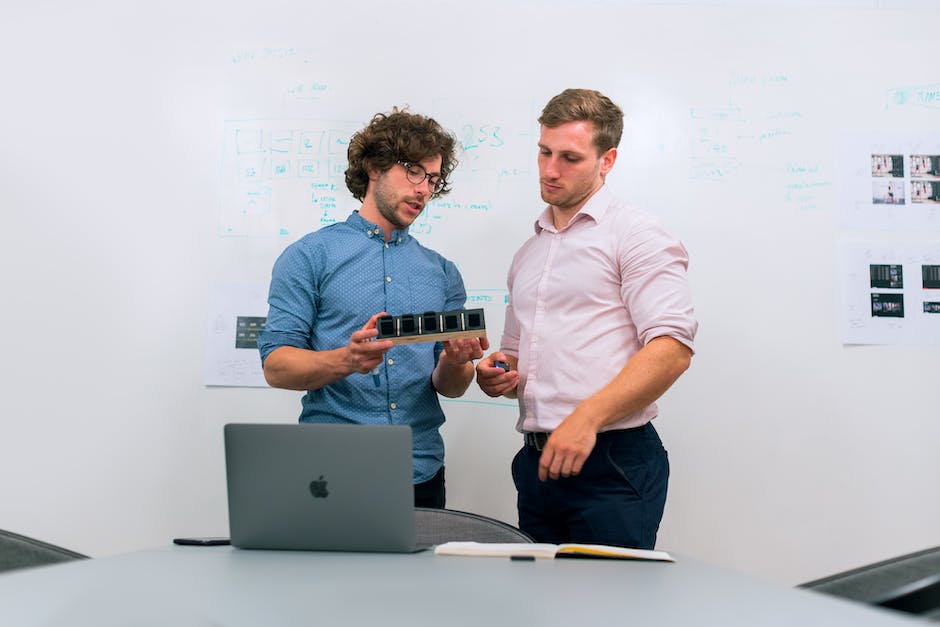Whether you’re a budding entrepreneur, an aspiring product manager, or a curious tech enthusiast, understanding the product development life cycle is a crucial aspect of any tech company’s operations. The concept of a ‘life cycle’ in itself denotes a series of stages through which a product progresses from conception to discontinuation. Grasping this process is fundamental to navigating a career in the tech industry, as it forms the backbone of all product-related decisions and strategies.
Product development isn’t just about creating a new product; it’s about creating a new product that will succeed in the market. It’s a journey that requires careful planning, meticulous execution, and constant testing and improvement. But why is this process so important? Let’s dive in.

The Relevance of Product Development Life Cycle in Tech
The product development life cycle plays an integral role in tech companies. It’s the roadmap that guides the journey from a simple idea to a tangible product ready for the market. It outlines the steps needed to bring a product to life, including ideation, design, production, testing, and launch.
Understanding the product development life cycle helps tech companies to plan and strategize effectively, ensuring that each phase of the product’s life is optimized for success. Moreover, it helps companies manage resources efficiently, align different teams towards a common goal, and mitigate risks and challenges associated with product development.
Key Phases in Product Development Life Cycle
The product development life cycle is typically divided into several key phases. Each phase has a specific focus and set of objectives that drive the product closer to its final form. In a broad sense, these phases include:
- Idea Generation and Concept Development
- Design and Prototyping
- Testing and Quality Assurance
- Launch and Marketing
- Feedback and Improvement
While there might be variations in the naming or sequencing of these phases depending on the company or the type of product, the core essence remains the same. Each phase is integral in shaping the product and ensuring it fits the market needs and expectations. In the following sections, we’ll delve deeper into each of these phases and explore them in detail.
Decomposing the Phases of Product Development
Breaking down the product development life cycle allows us to understand the intricate steps involved in creating a successful product. Each phase has its unique objectives, activities, and expected outcomes. By understanding these, we can better navigate the process and ensure a smooth transition from one phase to another.
Ideation and Concept Creation
At the heart of every product lies an idea. The ideation and concept creation phase is where these ideas are born and nurtured. Teams brainstorm, research, and generate a plethora of ideas that could potentially turn into a viable product. This is an exciting stage, filled with creativity and endless possibilities. But how are these ideas generated?
Various methodologies are used, such as brainstorming sessions, surveys, market research, and customer feedback. The goal is not just to create a product, but to solve a problem or fulfill a need. Hence, the ideas and concepts generated during this phase should align with the company’s mission and vision.
Feasibility Analysis and Design
Once an idea has taken shape, it’s time to determine its feasibility. Can this product be created with the resources at hand? Is there a market demand for it? These are some of the questions answered during the feasibility analysis phase.
Alongside this, the design of the product begins to take shape. The design phase involves creating prototypes, sketches, and detailed product specifications. This step is crucial as it translates the abstract idea into a tangible product design.
The Role of Different Teams in Product Development
The product development life cycle isn’t a one-man show. It involves the collaboration of various teams, each contributing their unique skills and expertise. Let’s take a closer look at these teams.
- Product Management: This team is responsible for guiding the product’s direction and ensuring it aligns with the company’s goals.
- Design: The design team is tasked with creating the product’s look and feel, focusing on user experience and aesthetics.
- Engineering: This team turns the product design into a working product, handling all the technical aspects of product development.
- Marketing: The marketing team is responsible for promoting the product and creating a buzz in the market.
- Sales: The sales team works to get the product into the hands of customers, playing a crucial role in the product’s success.
Challenges in the Product Development Life Cycle
Product development is not a walk in the park. It can be fraught with challenges that can significantly affect the process and the final outcome. So what are some of these challenges? And more importantly, how can they be effectively addressed?
One of the major challenges is lack of clear objectives. Without a clear understanding of what the product is supposed to achieve, the development process can lose direction. To prevent this, it is crucial to define clear and measurable objectives at the outset.
Resource constraints can also pose a significant hurdle. Be it time, money, or human resources, scarcity can impede progress. Effective resource management is key here. Prioritize tasks based on their importance and allocate resources accordingly.
Finally, there’s the challenge of unforeseen changes. In the fast-paced tech world, changes are inevitable. To navigate this, incorporate flexibility into your product development strategy. Be prepared to adapt to changes quickly and efficiently.
The Role of Testing in Product Development
Now, let’s talk about testing. Why is this stage so important in the product development life cycle? And what role does it play in ensuring the delivery of a high-quality product?
Testing is the stage where the product is assessed for any flaws or issues. It is a crucial step that ensures the product’s functionality and its ability to meet the defined objectives. Without adequate testing, the risk of releasing a product that does not meet the users’ expectations is significantly high.
Moreover, testing is not a one-time process. It should be carried out continuously throughout the development process. This continuous testing approach allows for early detection and resolution of issues, thereby saving time and resources in the long run.
Lastly, testing plays a crucial role in determining the user experience. A well-tested product is more likely to provide a seamless user experience, leading to customer satisfaction and ultimately, the product’s success.
Testing Stages in Product Development
| Stage | Description |
|---|---|
| Unit Testing | This is the first level of testing where individual components of the product are tested to ensure they are working as expected. |
| Integration Testing | Here, different components are combined and tested as a group. The aim is to identify any issues that occur when these components interact. |
| System Testing | This is a more comprehensive test where the entire system is tested to ensure it meets the specified requirements. |
| User Acceptance Testing | In this final stage, the product is tested in a real-world scenario by the end-users to ensure it meets their needs and expectations. |

Section 4: The Impact and Career Opportunities in Product Development
The Impact of the Product Development Life Cycle on the Tech Market
Understanding the product development life cycle is not just crucial for tech companies but also plays a significant role in shaping the tech market. How so? Well, a well-managed and structured product development life cycle often leads to the creation of high-quality, user-friendly, and innovative products. These products, in turn, can give tech companies a competitive advantage in the rapidly evolving, highly competitive tech market.
Moreover, a thorough understanding of the product development life cycle can help tech companies anticipate market trends and customer needs, leading to products that are not only technologically advanced but also relevant and timely. This relevance is key in the tech market, where obsolescence is a constant threat. So, in essence, the product development life cycle can be a powerful tool for tech companies looking to stay ahead of the curve.
Career Opportunities in Product Development
Now, let’s talk about you. What does understanding the product development life cycle mean for your career in tech? Well, a lot actually.
- Product Manager: They oversee the entire product development life cycle, from ideation to launch. They’re responsible for ensuring the product aligns with market needs and company goals.
- Product Designer: These professionals are involved in the design phase of the product development life cycle. They focus on creating a user-friendly design that meets the needs of the end-user.
- Software Engineer: They bring the product to life during the development phase. Understanding the product development life cycle can help them align their work with the overall product goals.
- Quality Assurance (QA) Analyst: They are involved in the testing phase. Their role is to ensure the product works as expected and is of high quality.
- Marketing Manager: They develop and execute marketing strategies for the product launch. Understanding the product development life cycle can help them effectively position the product in the market.
Beyond these roles, familiarity with the product development life cycle can be a valuable asset for anyone working in tech, as it provides a comprehensive overview of how tech products come to life.
Final Thoughts on the Product Development Life Cycle
Throughout this post, we’ve explored the product development life cycle and its relevance to tech companies and the tech market. We’ve delved into the different phases of the life cycle, discussed potential challenges, and examined the role of different teams in product development.
But what’s the key takeaway? Well, understanding the product development life cycle is essential for anyone looking to succeed in the tech industry. Whether you’re a product manager, a software engineer, or a marketing manager, understanding this process can help you contribute more effectively to your team and your company’s success.
- Gain a holistic view of the product development process
- Understand how different teams contribute to product development
- Learn to anticipate and handle potential challenges in product development
- Enhance your career prospects in the tech industry
In conclusion, the product development life cycle is a powerful tool that can help tech companies remain competitive and individuals excel in their careers. So, why not take the time to understand it better?
